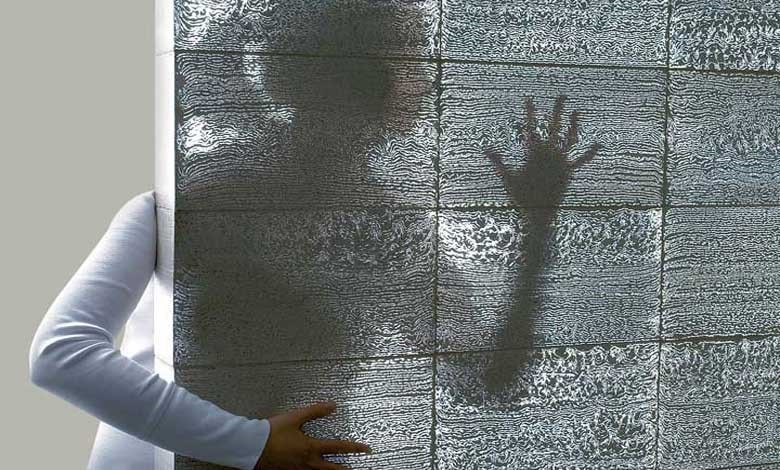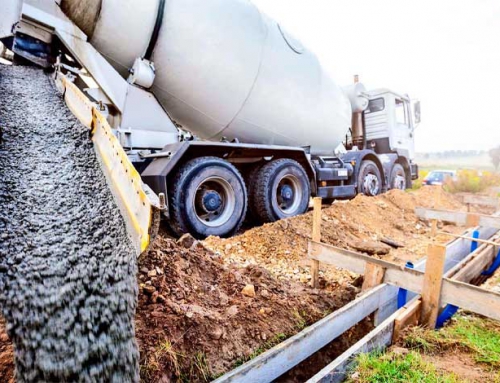?What is transparent concrete
Concrete is the most widely-used construction material in the world. Nevertheless, researchers and producers work together to create various types of concrete to improve the building’s overall quality and value of the building. Meanwhile, transparent concrete is widely used in many industries. Interior architecture is increasingly using transparent concrete, an energy-efficient, and environment-friendly material. You will find all the details you need to know about this concrete and its future in the construction industry in this paper.
Transparent concrete definition
With the concept of nano-optics, transparent or translucent concrete is produced by using fiber optics to make holes that allow light to pass from one side to the other. These fiber optics are distributed uniformly in the concrete and can be seen on both sides of the concrete block. They can appear as shadow lines in concrete while patterns are formed on one side of the surface. There are many methods to create transparent concrete. All these methods are defined based on 95% fine-grained concrete (cement and sand) and 5% light conductor materials, which are added in the mix design process. Also, this kind of concrete can be developed by adding fiber optics or glass fiber with a large diameter to reflect more light into the space. Transparent concrete has a favorable light conducting feature, and the ratio of optical fiber volume to the concrete is proportional to light transmission. It is the most aesthetically pleasing concrete available and retains all its strength parameters compared to normal concrete. The concept of saving green energy was presented in this novel building material.

Litracon properties
The characteristics of this concrete are presented in the below table.
| 5% of the whole block at max | Fiber amounts |
| Transmission of 3% of the radiated light from every 4% of the whole available fiber | Light transmission value |
| 2100 to 2400 kg/cm3 | Density |
| 49 N/mm2 in the worst state and 56 N/mm2 in the best state | Compressive strength |
| Equivalent to 7.7 N/mm2 | Flexural strength |
| 600 mm length, 300 mm width, and 25 to 500 mm thickness | Blocks size |
| White, gray, and black | Color |
Objectives of using transparent concrete
Litracon focuses on transparency, and the objective for using it is related to green technology and aesthetics. Green structures emphasize energy efficiency with internal heat systems. Therefore, the development of a novel functional substance is essential for providing structures for safety (fire alarms or damage identification), environmental protection, energy efficiency, and aesthetic characteristics. Using solar energy instead of electric energy is the main objective of transparent concrete. It reduces the charge associated with non-renewable resources and leads to energy efficiency. As an element of light transmission, optical fiber reduces artificial light consumption. Consequently, transparent concrete is used in place of normal concrete to create a space filled with natural light and artistic design.
Transparent concrete properties
Some properties of litracon are presented below:
- Walls of every thickness can be made by Litracon.
- Light can be transmitted to 20 m over the concrete without wasting lighting.
- More natural light can turn on interior space. It leads to a reduction in electric consumption.
- Architects can design a wide range of structures for floors, sidewalks, building blocks, and bearing walls.
- It is designable as a bearing element (reinforced concrete).
- It is made as precast, and the frame is customized.
- It has high quality and accuracy in production.
Importance of transparent concrete as a building material
As an appropriate material for reducing electricity consumption, transparent concrete allows a sufficient amount of light to transmit. Therefore, it can be used as an environmentally friendly replacement for normal concrete in the future.
Besides its economic and environmental benefits, Litracon enhances the aesthetic value and visual architecture of the structure. However, it does have a few limitations when used in massive projects despite its various advantages.
Because optical fibers are expensive materials, it is more expensive to produce transparent concrete than ordinary concrete. The lack of proficiency is another reason we cannot replace normal concrete with transparent concrete. Injection of optical fibers into concrete mixtures requires experts, and there are not enough experienced individuals in this field.
The research should be aimed at finding economical ways to produce transparent concrete to turn it into a viable alternative. As opposed to normal concrete, transparent concrete could be a cost-effective and environmentally friendly alternative, according to many experts.

Public Librari Stuttgart
Transparent concrete advantages
Litracon’s advantages are as below:
- It leads to saving energy (it needs less light).
- It is usable for structural elements.
- It is environmentally friendly due to its light transmission properties.
- It is lighter than conventional concrete.
- It increases the aesthetic value.
- It can be used where the light cannot enter the space.
- It has no repair and maintenance cost.
- It can be used inside and outside of the building.
- It gives spiritual value to the interior.
- It gives people a sense of calm.
How is transparent concrete produced?
It is produced by combining four main substances, including cement, water, fine grains such as sand, and optic fiber. As an alternative to other concrete grains, optical fibers conduct light from artificial and natural sources, even at angles greater than 60 degrees. There are three different layers in optic fibers, including buffer coverage, cover, and core. Light is transported through the core.
The creation process of transparent concrete is similar to the conventional one. The only difference is adding 4 to 5% optic fibers to the concrete mixture based on the volume. This process consists of adding a layer of fiber to different layers of the concrete at 2 to 5 mm distances. The thinner layer provides more light transmission.
An important point to be noted is that transparent concrete does not contain coarse aggregates (gravel) because gravel damages fiber threads and prevents light transmission through the concrete block. Also, when preparing the concrete mixture, a quick setting of cement is preferred. Transparent concrete is of the precast type, so after creation in the factory, is cut and polished as a block or panel. Then, the cut pieces are delivered to the project site.
Transparent concrete use in the construction industry
Using light transmission concrete is not widespread as conventional concrete. However, it was used in some architectural buildings and aesthetic construction as the facing material.
Transparent concrete is suitable for floors and superstructures and can be used on stairs as well. It is also used in partition walls, doors, panels, and other interior spaces of the building and illuminates the interior during the day, adding to the beauty of the space.
In addition to the lightening of dark places or regions without windows, such as underground, it can be used on sidewalks and speed bumps. It lightens sidewalks and speed bumps over the night and provides more safety for pedestrians and road traffic.
Samples of using transparent concrete
Although it is not common, there are some magnificent projects in which transparent concrete is used. European gate, built in 2004, is a monument built to appreciate joining Hungary to the European Union. It is one of the famous landmarks in this country due to its light transmission quality.
Stuttgart City Library is the other example. In this structure, designed by Yi Architects, natural light illuminates the space through its cubic and a transparent roof. It is a popular structure around the globe.
Last words
Transparent concrete is a combination of optic fiber and cement paste. It is produced using a novel method that differs from conventional concrete production methods. It is lighter than conventional concrete and has many advantages. Litracon can be a cost-efficient alternative for commercial and building projects.
Because of the high costs and special technology for creating this concrete, it is still in the beginning stages. Yet, its use in building, urbanism, and interior architecture is predicted to increase soon. Therefore, producers are trying to come up with a cheaper way to create transparent concrete.










Leave A Comment